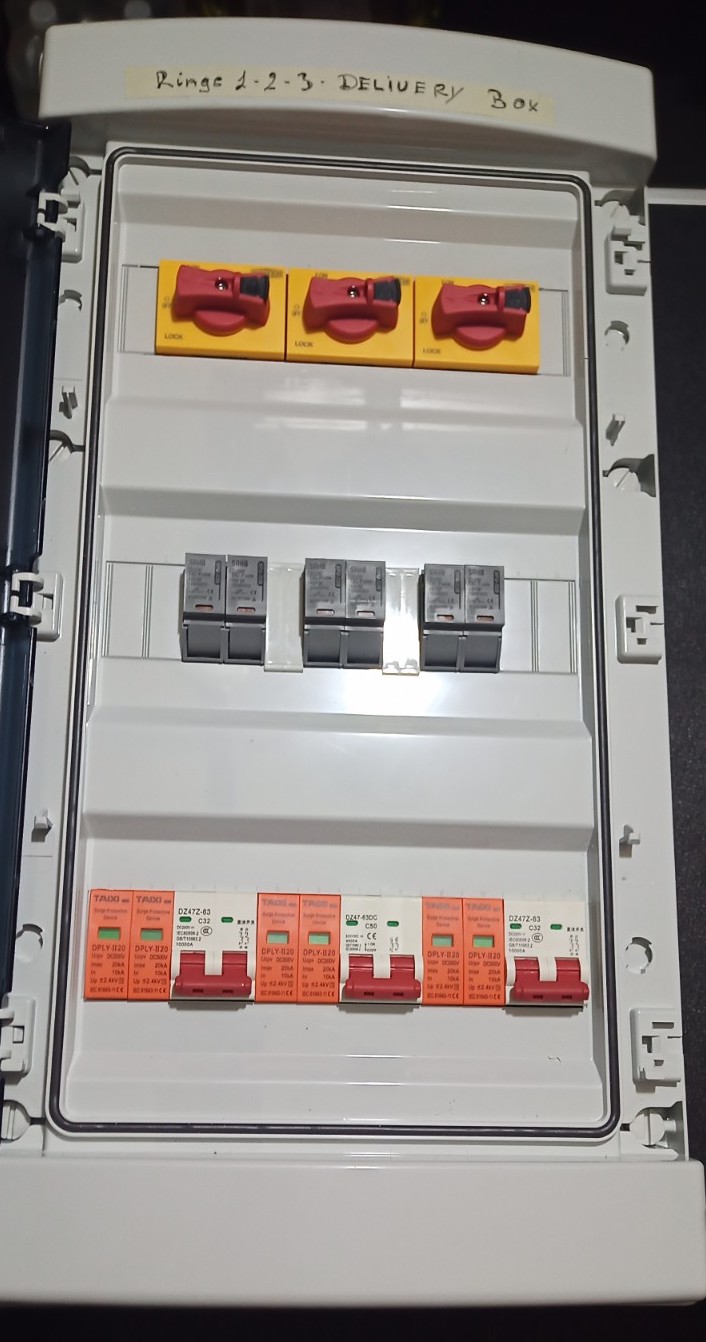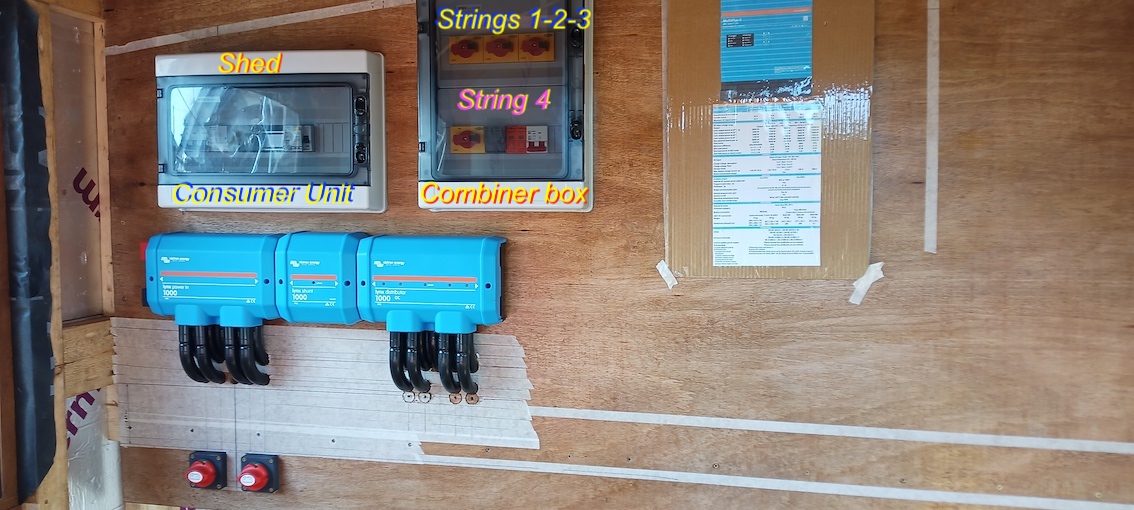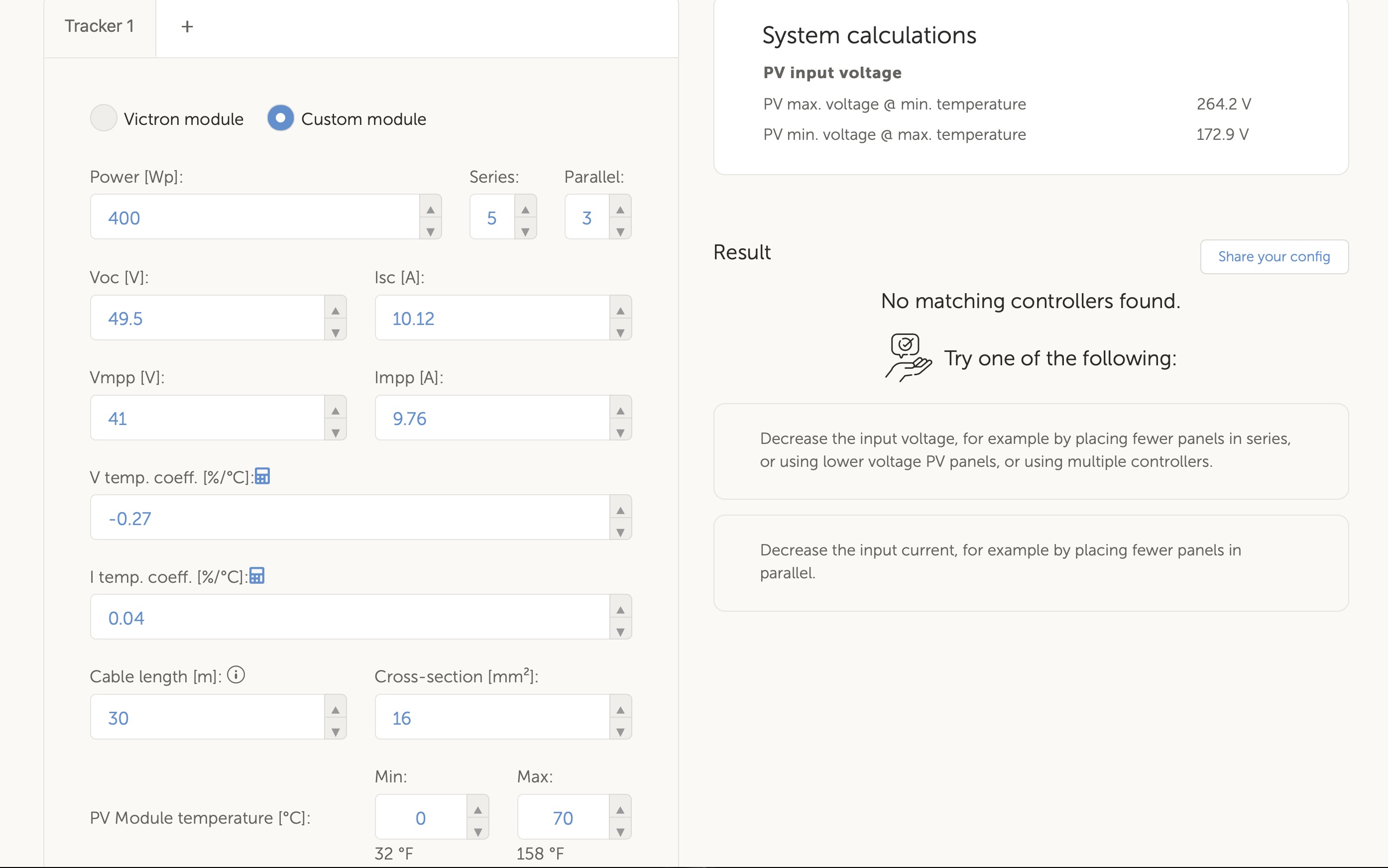I read this thread which would make sense if I didn’t get a different result from the victron mppt online calculator:
“The max short circuit current accepted in is 70A. The reason for this is that sometimes the pv input is short-circuited to prevent charge.
See the tech spec.
General calculations are batt voltage x charging amps + 30% for watts connected in.
48x 100 =4800 x 30% = 6240W ÷ 400W panel size = 15.6 or 16 panels max”
In my case I was going to use 4 identical strings each of a series of 5 x 415w modules into a 250/100 charger and, if I accept the over 130% oversizing, the calculator agrees with that returning an oversizing of 169% and also suggesting that wanting to, I could use a 250/85 allowing me even up to 6 strings of the same nature with an oversizing of 254%.
Instead, following the calculation of the above thread, I would have 48x100 x30% = 6240 divided by 415w panels = 15.036 so I should have a max of 3 strings of 5 pv into one MPPT.
So which one should I follow and what is the real meaning of “oversizing above 130%” in terms of equipment safety”?
Am I to understand that by accepting the “accept oversizing above 130%” option the 250/100 MPPT would simply restrict the max input amperage to 70A as described above in which case one would simply be wasting the remaining energy when available?
Thanks in advance for any reply





